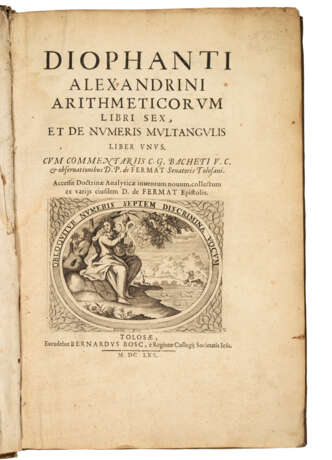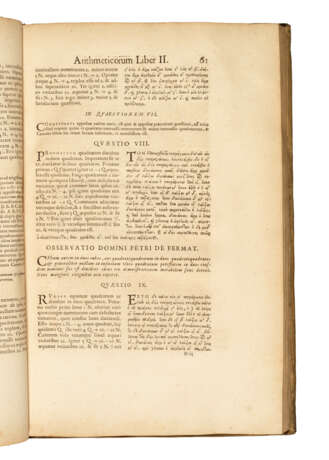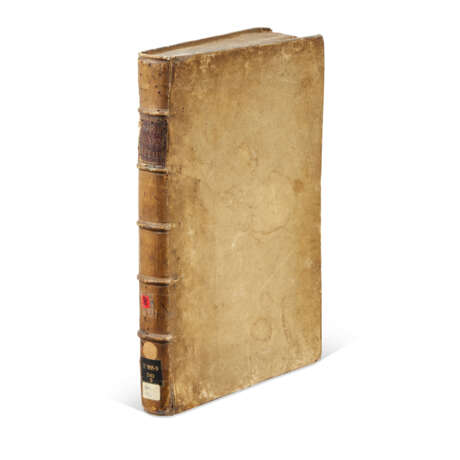ID 870874
Lot 145 | DIOPHANTUS of Alexandria (fl. A.D. 250)
Estimate value
£ 15 000 – 20 000
Arithmeticorum libri sex, et de numeris multangulis liber unus. Edited by Claude Bachet de Méziriac (1581-1638), commentary by Pierre de Fermat (1601-1665). Toulouse: Bernard Bosc, 1670.
Tall, wide-margined copy of the first printing of Fermat’s theorems relating to number theory. Fermat owned a copy of the Greek editio princeps of 1621 in which he wrote notes on the mathematical problems posed by Diophantus; he died without any intention of having them published. When his son Claude-Samuel chose to include the annotations in this second printing of the work, he presented the first contribution by a Renaissance mathematician to the theory of numbers and the first step in the invention of differential calculus. The most famous of the 48 observations made by Fermat is the first statement of his celebrated 'Last Theorem', not proven until 1995 when Andrew Wiles, professor of mathematics at Princeton, completed a 130-page proof – Fermat had claimed he knew the proof but lacked the space in the margin to show it. Honeyman 893; Norman 777 (in the present copy, only X3 is mis-signed Xii).
Folio (364 x 240mm). Greek and Latin text in parallel columns, Latin commentary in single column. Engraved title vignette after Rabault, two engraved headpieces, engraved opening initial, woodcut initials and ornaments (tiny marginal tear to ê2, leaves E3-F4 lightly creased and slightly frayed at fore-edge, tiny stain on P1v obscuring a few letters, Z1r and b4v with heavy marginal finger-soiling, leaves f2-3 misbound with their order inverted, variable browning and staining, sometimes heavy). Contemporary vellum, gilt red morocco spine label (label slightly defective, small wormholes to head of spine); modern blue half morocco box. Provenance: Rev. Hugh Shearer (label dated August 1910, presenting the book to:) – Brighton Public Library (small discreet blindstamp on title, bookplates and old shelf labels on spine).
Special notice
No VAT on hammer price or buyer's premium.
| Address of auction |
CHRISTIE'S 8 King Street, St. James's SW1Y 6QT London United Kingdom | |
|---|---|---|
| Preview |
| |
| Phone | +44 (0)20 7839 9060 | |
| Buyer Premium | see on Website | |
| Conditions of purchase | Conditions of purchase |





